Light
Light is a form of energy that allows us to see the world around us. It is a type of electromagnetic radiation that travels in waves.
Properties of Light
Light has several important properties:
- Reflection: Light can bounce off surfaces, allowing us to see objects.
- Refraction: When light passes through different materials, such as air, water, or glass, it bends and changes direction.
- Speed: Light travels at a speed of about 300,000 kilometers per second in a vacuum, making it the fastest thing in the universe.
- Color: Light can be broken down into different colors of the spectrum, including red, orange, yellow, green, blue, indigo, and violet.
- Shadows: When light is blocked by an object, it creates a shadow on the other side.
Sources of Light
There are two main sources of light:
- Natural Sources: The sun, stars, and other celestial bodies emit light.
- Artificial Sources: Light bulbs, candles, and other man-made sources produce light.
Uses of Light
Light has many practical uses in our daily lives:
- Seeing: Light allows us to see the world around us and interpret our surroundings.
- Photosynthesis: Plants use light to create energy through the process of photosynthesis.
- Communication: Light is used in fiber optic cables for high-speed communication.
- Medicine: Light is used in medical treatments, such as phototherapy for skin conditions.
Study Guide
Here are some key points to remember about light:
- What is light and how does it travel?
- What are the properties of light, and how do they affect our perception of the world?
- What are the sources of light, and how do they differ in natural and artificial settings?
- What are the practical uses of light in our daily lives and various fields of study?
Understanding the nature of light is essential for comprehending the world around us and the various technologies we use every day.
[Light] Related Worksheets and Study Guides:
.◂Science Worksheets and Study Guides Third Grade. Weather
Study Guide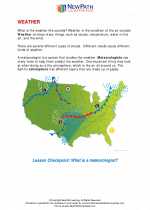 Weather
Weather  Worksheet/Answer key
Worksheet/Answer key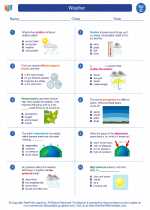 Weather
Weather  Worksheet/Answer key
Worksheet/Answer key Weather
Weather  Worksheet/Answer key
Worksheet/Answer key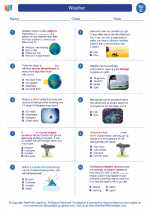 Weather
Weather  Vocabulary/Answer key
Vocabulary/Answer key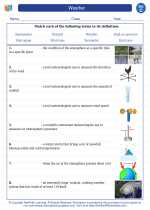 Weather
Weather  Vocabulary/Answer key
Vocabulary/Answer key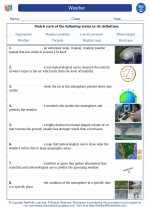 Weather
Weather 

 Worksheet/Answer key
Worksheet/Answer key
 Worksheet/Answer key
Worksheet/Answer key
 Worksheet/Answer key
Worksheet/Answer key
 Vocabulary/Answer key
Vocabulary/Answer key
 Vocabulary/Answer key
Vocabulary/Answer key

The resources above cover the following skills:
EARTH AND SPACE SCIENCE (NGSS)
Earth’s Systems
Students who demonstrate understanding can:
Represent data in tables and graphical displays to describe typical weather conditions expected during a particular season.